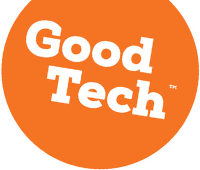iPhone 13 vs iPhone 12: Which one is for you?
Apple's iPhone lineup has consistently set the benchmark for premium smartphones, offering exceptional performance, cutting-edge features, and a seamless user experience, but sometimes it's hard to know what's actually improved and is it worth the difference in cost!
In this blog post, we will delve into a comprehensive comparative analysis of the iPhone 12 and iPhone 13, examining their design, display, performance, camera capabilities, 5G connectivity and battery.
Design:
In terms of design, the iPhone 13 maintains a similar aesthetic to the iPhone 12 with its flat-edge design and glass back. However, there are some subtle differences. The iPhone 13 features a smaller notch, resulting in a slightly larger display area, while the rear camera module has been rearranged diagonally, giving it a fresh look. Additionally, the iPhone 13 is marginally thicker and heavier than its predecessor, but these differences are hardly noticeable in day-to-day usage.
Display:
Both the iPhone 12 and iPhone 13 offer stunning displays, but the iPhone 13 introduces a notable improvement. The iPhone 12 features a Super Retina XDR display with Ceramic Shield glass for enhanced durability. The iPhone 13, on the other hand, boasts the Super Retina XDR display with ProMotion technology, offering a 120Hz refresh rate. This advancement results in smoother scrolling, improved responsiveness, and an overall more fluid user experience.
Performance:
When it comes to performance, the iPhone 13 takes a good leap forward. It is powered by the A15 Bionic chip, which offers improved CPU and GPU performance compared to the A14 Bionic chip found in the iPhone 12. The A15 chip enables faster app launches, smoother multitasking, and better graphics-intensive tasks. Both devices excel in day-to-day tasks and gaming, but the iPhone 13's enhanced processing power sets it apart for those seeking the latest in performance capabilities.
If you're not a power user, however, you may not notice the difference.
Camera Capabilities:
The camera systems of the iPhone 12 and iPhone 13 have notable differences, particularly in the case of the iPhone 13 Pro models. The iPhone 12 features a dual-camera setup (wide and ultra-wide lenses), while the iPhone 13 offers a dual-camera setup with sensor-shift optical image stabilization for improved image stabilization and low-light performance.
Both iPhone Pro models have a triple-camera system, including a wide, ultra-wide, and telephoto lens. Additionally, the Pro models benefit from larger sensors, improved low-light capabilities, and the introduction of Photographic Styles, allowing users to customize the look of their photos. The iPhone 13 Pro also introduces a macro focus feature for close-up shots. These advancements make the iPhone 13 Pro models an enticing choice for photography enthusiasts and professionals.
5G Connectivity:
Both the iPhone 12 and iPhone 13 support 5G connectivity, enabling users to experience faster download and upload speeds in areas with 5G coverage. However, the iPhone 13 features improved 5G capabilities with support for more 5G bands, ensuring broader compatibility and better performance in diverse network environments.
Battery Life and Storage:
Battery life is a critical aspect for any smartphone user. The iPhone 13 boasts improved battery efficiency, offering extended usage time compared to the iPhone 12. This enhanced battery performance ensures users can enjoy their iPhone experience for longer periods without needing to recharge frequently.
Conclusion:
The iPhone 12 and iPhone 13 represent significant milestones in Apple's flagship smartphone lineup, each offering incremental improvements and new features. The iPhone 13 showcases advancements in design, display, camera capabilities, processing power, battery life, and enhanced 5G connectivity. While the iPhone 12 remains a formidable device, the iPhone 13 pushes the boundaries further, delivering a refined user experience and setting new standards in smartphone technology.
Choosing between the two ultimately depends on individual preferences, budget considerations, and the desire to have the latest advancements in Apple's smartphone ecosystem.












